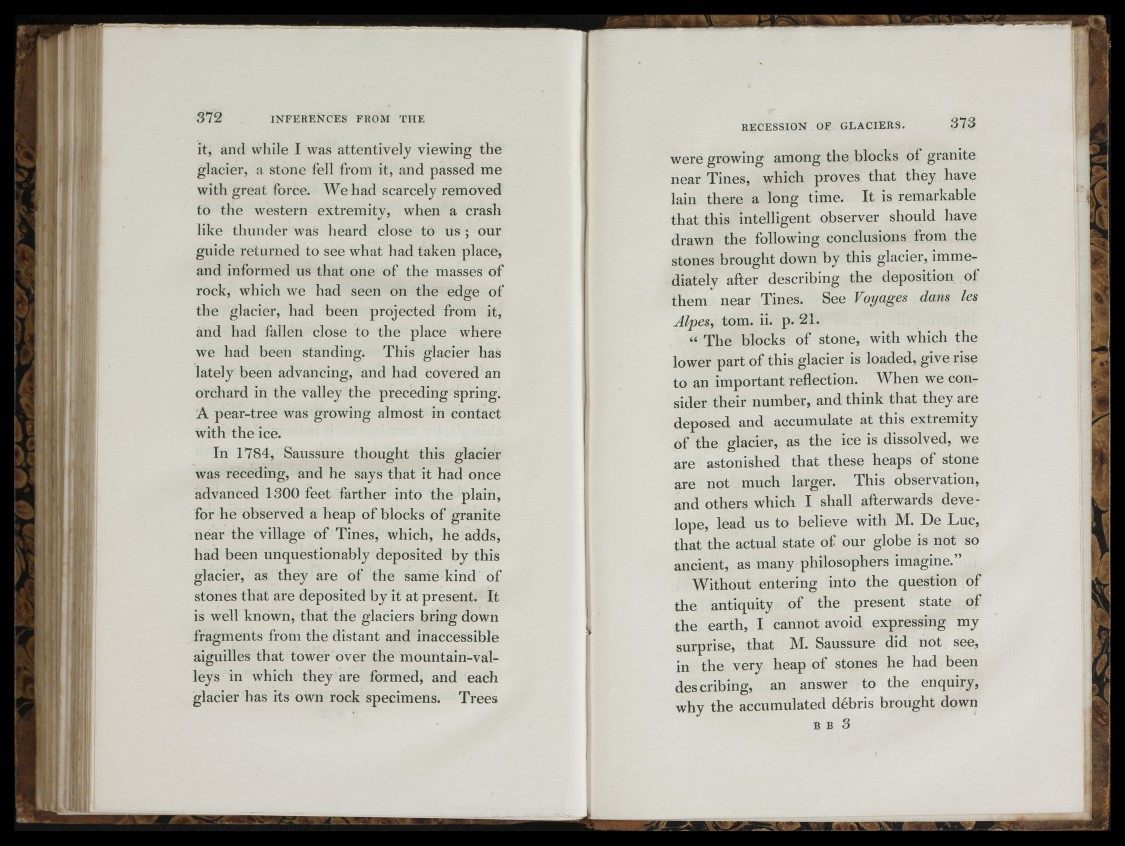
it, and while I was attentively viewing the
glacier, a stone fell from it, and passed me
with great force. We had scarcely removed
to the western extremitv, when a crash
like thunder was heard close to us ; our
guide returned to see what had taken place,
and informed us that one of the masses of
rock, which we had seen on the edge of
the glacier, had been projected from it,
and had fallen close to the place where
we had been standing. This glacier has
lately been advancing, and had covered an
orchard in the valley the preceding spring.
A pear-tree was growing almost in contact
with the ice.
In 1784, Saussure thought this glacier
was receding, and he says that it had once
advanced 1300 feet farther into the plain,
for he observed a heap of blocks of granite
near the village of Tines, which, he adds,
had been unquestionably deposited by this
glacier, as they are of the same kind of
stones that are deposited by it at present. It
is well known, that the glaciers bring down
fragments from the distant and inaccessible
aiguilles that tower over the mountain-valleys
in which they are formed, and each
glacier has its own rock specimens. Trees
were growing among the blocks of granite
near Tines, which proves that they have
lain there a long time. It is remarkable
that this intelligent observer should have
drawn the following conclusions from the
stones brought down by this glacier, immediately
after describing the deposition of
them near Tines. See Voyages dans les
Alpes, tom. ii. p. 21.
“ The blocks of stone, with which the
lower part of this glacier is loaded, give rise
to an important reflection. When we consider
their number, and think that they are
deposed and accumulate at this extremity
of the glacier, as the ice is dissolved, we
are astonished that these heaps of stone
are not much larger. This observation,
and others which I shall afterwards deve-
lope, lead us to believe with M, De Luc,
that the actual state of our globe is not so
ancient, as many philosophers imagine.”
Without entering into the question of
the antiquity of the present state of
the earth, I cannot avoid expressing my
surprise, that M. Saussure did not see,
in the very heap of stones he had been
describing, an answer to the enquiry,
why the accumulated débris brought down
B B 3
'r
r
M
[%
■I i